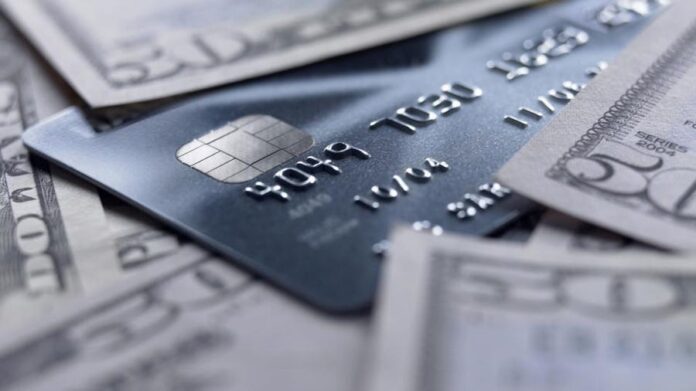
Life has a way of delivering financial curveballs when we least expect it and sometimes those curveballs end up costing a fortune. If you have an emergency car or home repair that you simply can’t afford, it might mean that you’ll need access to credit.
Knowing how to use credit responsibly and where to save on the cost of that credit can turn a dangerous slippery slope into a manageable necessity. Here are seven tips and considerations on how to responsibly manage your debt and credit cards.
1. Fix Your Existing Credit Card Debt

Credit cards might seem like the best credit option, but often if you let them get out of control or don’t pay them back in full quickly, you’ll soon rack up some pretty big interest costs and it can be difficult to pay them off. By converting your credit card debt into another form of credit, you might be able to get your existing credit card debt under control.
One option if you’re looking to get a handle on existing debt is to consult a lender like Tally that can help you. Tally provides an easy-to-use app where you can add your current credit card debt and they will assess you for eligibility for a line of credit which includes paying off your current credit cards immediately. Tally’s guide that details the best way to use a credit card on their blog is also well worth a read.
2. Never Pay Only the Minimum Payments
No matter what form your credit takes, always aim to pay more than you have to every month, particularly on your credit cards. Many credit cards offer a period of interest-free use, and if you can get it paid up before that period lapses, you can borrow at no additional cost, other than the annual or monthly fees of the credit facility.
Paying the minimum balance might help you avoid the fees and penalties that come along with missing payments, but chances are they’re not making any significant dent or progress into the principal debt amount. If you only pay the minimum, you’re rolling over a balance that is racking up interest every month, making a credit card a very expensive way of accessing credit. Paying more than the minimum reduces the amount of interest you’ll pay, and that makes the cost of that credit cheaper.
3. Don’t Max Out Your Credit Limit
Your credit utilization ratio, which is how much of your available credit you’re currently using has quite a big impact on your credit score. The more of your available credit you use, the bigger the negative impact on your overall score. If you can stay below your credit limit, you’ll benefit from a positive impact on your credit score. The further below your limit you are, the better. The Consumer Financial Protection Bureau recommends you don’t use more than 30% of your credit limit.
4. Look at the Rewards Program

Many credit cards offer some form of reward program and ignoring it can actually end up meaning you’ll lose a fair amount of value and money in benefits and rebates. Read through what your credit card’s reward program offers you and take advantage of it. This might end up being a percentage of your spending at certain stores or on specific days, or it can be a rebate if you drive an electric vehicle or similar.
5. Consider Switching Credit Providers
Look around for promotions being offered by credit card companies. You might find some useful ones in the form of new customer sign-up promotions that can be a lifesaver if you find yourself with a significant credit balance. Some credit card companies might offer you an extended period of interest-free credit for signing up for their card, so you could use an offer like this to transfer your existing balance and save on interest costs.
Don’t forget, before you do this you should check what the balance transfer fee costs are, as there is usually an associated fee of around 5% which might end up costing more than the interest depending on your balance.
6. Avoid Using Credit for Luxuries
It might be tempting to sign up for a credit agreement to make that new luxury purchase affordable. It’s very important before you do so to understand how much more you’ll be paying if you use credit to finance it and then decide if it’s still worth it just to get the new version of the Apple iPhone or a bigger TV. You might end up paying many more times more than the sticker price if you use credit. It’s not just the credit card that can have you fall into this trap. Signing up for a mobile plan that includes a phone can also see you paying more than the cash price. Always do the math and make sure you’re prepared to pay the full cost, including interest before you buy anything.
Try instead to keep purchases on credit for expenses that you can’t afford that are essential. A breakdown and repair on your car or the emergency repair or replacement of a household appliance like a refrigerator are excellent examples of when using credit is necessary.
7. Read Your Credit Agreements

Every credit agreement comes with a set of terms and agreements that govern the account. Read them carefully and take note of the specifics, particularly details like the minimum payment percentage, the payment due dates, interest rates, and other fees, both monthly and annual. Being aware of these details and your responsibilities will help you avoid penalties and late payment fees and might stop you from overextending yourself when it comes to what you can afford to pay back in installments.
It might feel like a lot to remember, but the core of good credit management is simple. Don’t exceed 30% of your available credit limit, pay back any money that you borrow as quickly as possible, and try not to use credit for luxuries. These few simple rules will help you develop a healthy relationship with credit and its responsible use.











